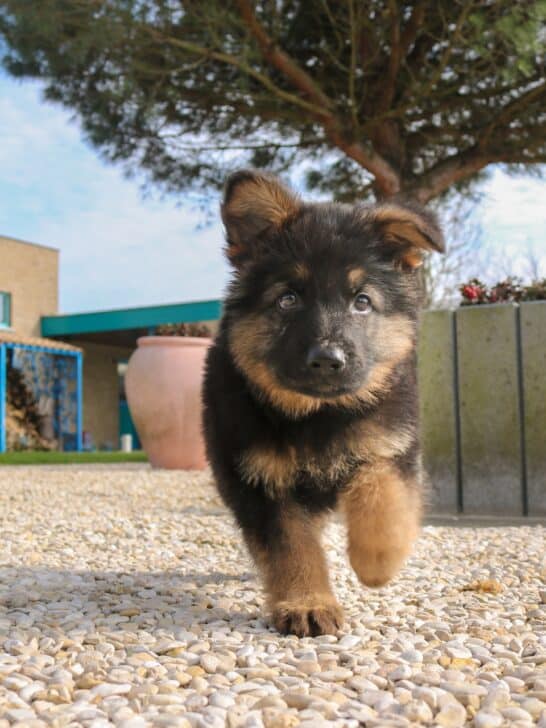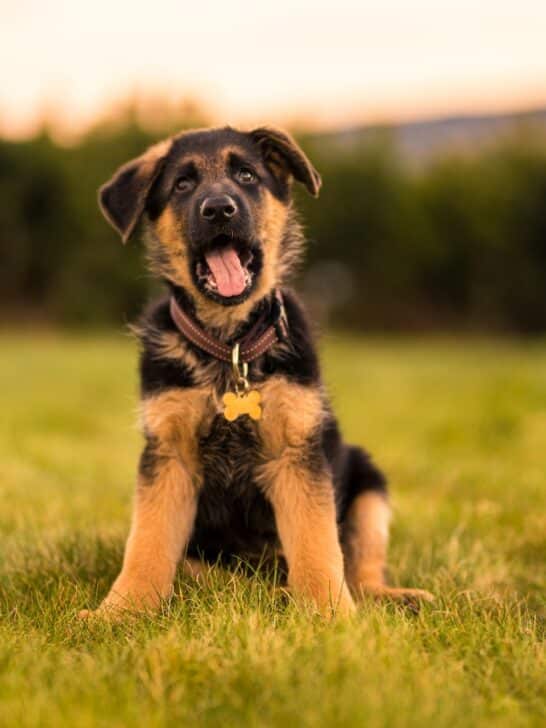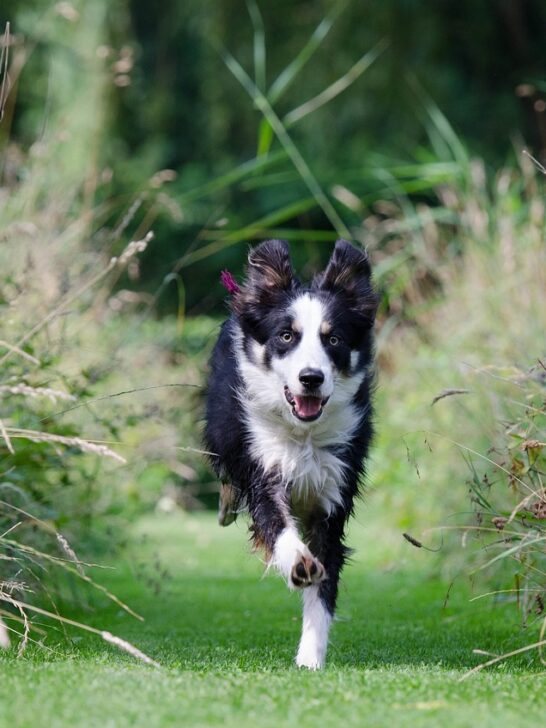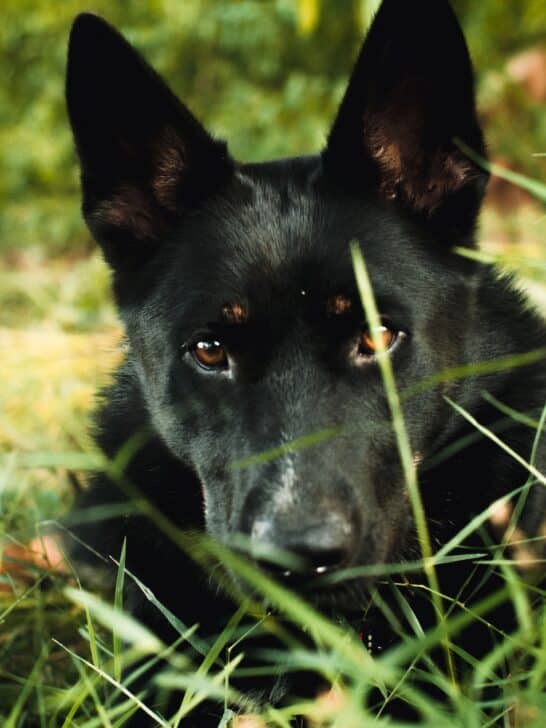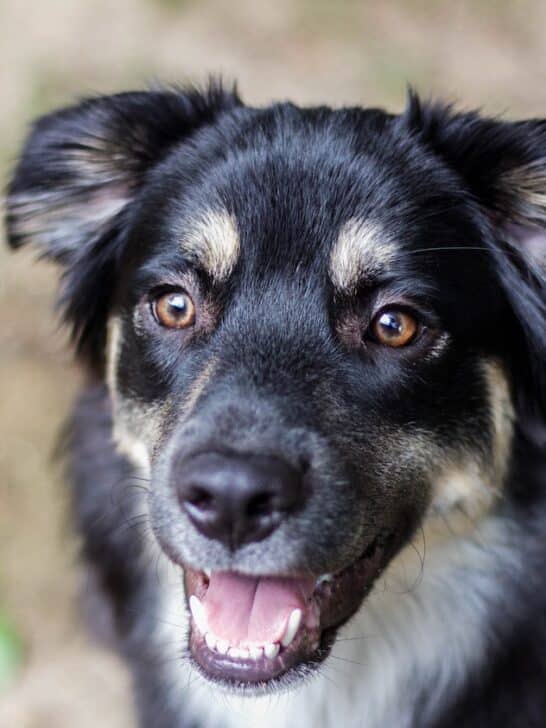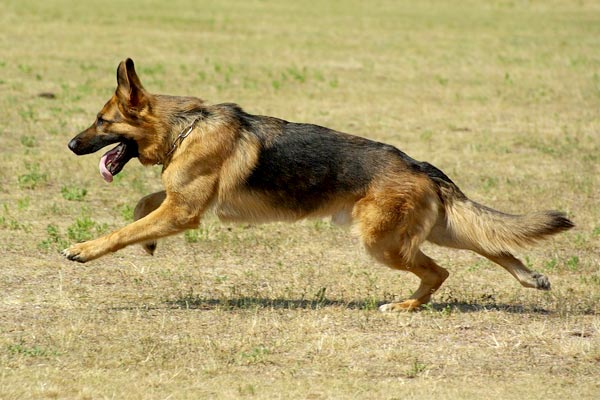10 Top Training Tips And The Best Training Games To Play With Your Dog
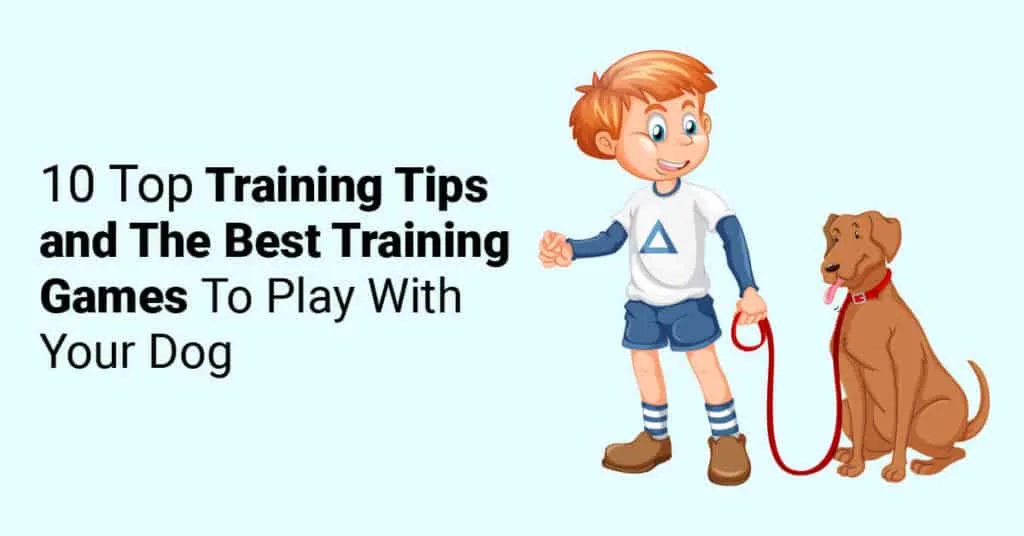
Introduction

Training your dog can be a difficult process when you’re inexperienced.
Fortunately for you, humankind has been training dogs for thousands of years, so we’ve pretty much turned it into a scientific field at this point.
There are ten tips that make the training process so much easier, no matter how familiar you are with dogs and how their minds work. We’ve included those tips and more in the guide below:
- Why Training Your Dog Is Important
- Why You Should Make Dog Training Fun And Playful
- 10 Top Tips For Training Your Dog
- Fun Games To Play With Your Dog
Between those sections, you should learn everything you need to know about why you should train your dog and how you can achieve it.
If you want to learn as much as you can about dog training, we’ve also included references to other reading materials that will help.
Let’s start with the reasons that every dog should be properly trained.
Why Training Your Dog Is Important
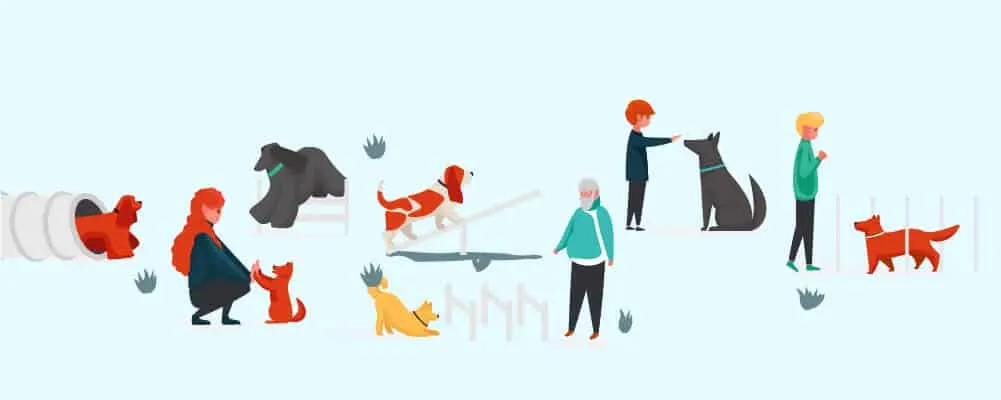
You should be motivated to train your dog to be as obedient and well-behaved as possible.
If you don’t understand the importance of training your dog, you may become lax in your training regimen and give up.
So, why is it important?
Training your dog isn’t about your convenience or the general happiness of your dog, it’s also about safety.
An untrained dog will be quick to anger and have fewer inhibitions, which means they can become scared and/or aggressive during everyday situations.
Part of the training of a dog is telling them what they should and should not respond to, both in and out of the home.
Take a look at The Best German Shepherd Dog Training Books.
Perhaps one of the most extreme examples would be the importance of a recall order. This is where you call your dog back to you if they’ve been let off the leash or have otherwise escaped your grasp.
Let’s say that your dog is rushing towards a busy road, out of excitement or aggressiveness, and now they are in danger.
A recall order can save your dog’s life in those cases, along with the health of other animals and human beings.
While they are our furry friends, dogs are still animals and an uncontrolled animal has the potential to be dangerous.
The likelihood of your dog causing any harm to itself, you, or others are drastically reduced when they have been trained.
Trained dogs face less stress when living their lives, so their hearts and heads won’t suffer any unnecessary health complications.
They’ll also be more social, allowing them to simply enjoy life more than they would if they were a loner or aggressive to strangers.
Why You Should Make Dog Training Fun And Playful

The training process should also be fun and playful for both you and the dog. While the dog is an animal, so are humans too, and we all require incentives to do things.
We like to do things that make us happy and give us good experiences, so you should make the training process enjoyable to motivate both of you to continue training.
If you push too hard or take things too seriously, you and your dog will become frustrated and quickly give up. So, there’s a practical reason for making dog training fun.
If you want to actually finish the training process, it should be fun to do in the first place.
Aside from that, it also makes dogs more malleable to being trained and controlled.
Even the hardiest of dog breeds are sensitive to the emotions of their owners, so they’ll pick up on any anxiety or frustration you’re feeling. That’s why you must have fun, too!
Then, when you’re both having fun, your dog is eager to please and will follow commands dutifully.
While we will get into more detail later, you should always keep in mind that dogs respond better to positive reinforcement than punishment.
Dogs should be celebrated for doing things right and guided away from doing things wrong, not shouted at or pushed around.
Doing that will just create a resentful and/or mentally damaged animal that will act out, either voluntarily to rebel against you or involuntarily because you have traumatized them.
10 Top Tips For Training Your Dog
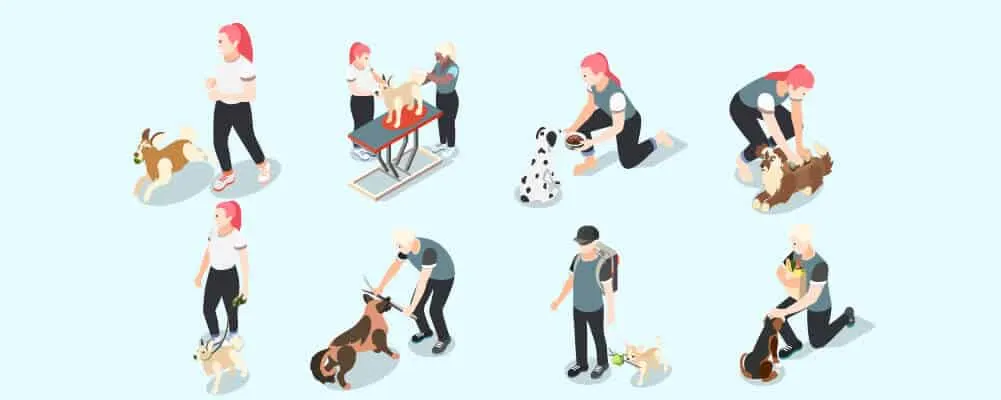
Now that we understand why dog training is important and why it should be fun for all, let’s get to the ten tips that everybody should know when training dogs.
Keep them in mind throughout the whole training process and factor them into everything you make the dog do.
1. Set The House Rules
Our first step is preferably done before the dog even enters your home but there are no worries if you already own it.
Remember that a younger dog is much easier to train because it’s easier to establish rules that they’ll follow for their entire life… with some hiccups along the way, of course.
Here are some things to consider when laying down the law:
- Are they allowed on the furniture?
- Are they allowed on the bed?
- Are parts of the home restricted for the dog?
- Are they allowed to jump on people?
- How are they expected to behave at dinnertime? Are they allowed at the table?
- Where are they supposed to go potty?
- Where will they sleep?
- Who is responsible for the dog in the family? Do you share responsibility?
- Can you safely walk the dog?
These are just some of the things that you should think about before, or as soon as your dog comes to the home. Establishing these rules early makes things much less confusing for both of you.
If you let your dog do certain things, it’ll think it’s allowed to do them. When that happens, it becomes much more difficult to set restrictions that conflict with prior behavior. It’ll get confusing for both of you!
You’ll need to do some more if you have children in the home. You’ll need to teach them how to approach and handle the dog too, along with other people who are likely to come into your household.
These few things will spare you and your family a lot of time, money, and annoyance.
- Teach kids to treat dogs as animals, not toys. Stop them from pulling the dog’s tail or their ears.
- Teach everybody to refrain from yelling or hitting the dog.
- Teach everybody to leave the dog alone when it’s eating, to avoid food aggression.
- Teach people not to leave shoes, phones, or other chewable items around, especially around puppies!
2. Help Your Dog Relax
Now that you’ve thought about the house rules, you should make sure your home is somewhere where your dog feels relaxed and ready to learn.
Warmth always helps to make mammals comfortable, so a hot water bottle or a warm blanket can go a long way to making them feel safe.
Organize their sleep area with comfort in mind and allow them to explore safe areas while they are awake. A great tip is to place a ticking clock nearby as the sound mimics the heartbeat of fellow pups.
You can get special comforters that are built inside stuffed animals to serve this purpose.
If the dog lived somewhere loud and disruptive, it is especially important that you get them comfortable and settled in.
Dogs that have had a rough start in life but are still pups aren’t a lost cause, they can still become healthy and happy animals, and starting in a fresh, calm, and supportive environment is a big part of that transformation.
When a dog is relaxed in the home, it also takes the edge off everybody else in the house. Nobody wants their dog to be alert and pacing around the home as if there’s a threat looming around every corner.
3. Reward Good Behavior
While we love to talk to our dogs, they understand our sentiment more than the words themselves.
They learn through different contexts, so rewarding them for good behavior is the way to get them to do what they want.
Head pats and cuddles only go so far, however, so you should stock their favorite treats to give them extra encouragement. Never give treats after bad behavior because it will confuse them.
Finding out their favorite treats can be a process itself, though dogs aren’t known to be fussy.
Packing dental sticks are a great option because they function as treats while also promoting oral health for your dog. Otherwise, certain human foods can suffice for treats such as:
- Meats like chicken, pork, lean beef, and fish.
- Cooked eggs
- Hard cheeses
- Banana
- Carrots
- Tomatoes
- Broccoli
- Small pieces of bread
- Popcorn
- Peanut butter (without xylitol or added sugars)
All of these should be used in moderation. You don’t want to overfeed your dog and cause them discomfort and health issues further down the line.
You should also avoid toxic foods when treating your dog. Playtime with their favorite toys can also be used as treats.
4. Don’t Punish Your Dog
As we’ve alluded to already, scolding your pet is a great way to give them an attitude problem.
A dog that gets scolded will become frustrated with you, especially since dogs naturally want to please their owners and gain their approval.
This makes them sad and they will lash out, becoming rebellious and aggressive to your commands.
If the punishment is too extreme, you could even harm your dog’s mental health. A classic example is being too tough on dogs when you’re teaching them to urinate in a certain place.
If the dog is struck or scolded too harshly, they’ll become scared and unable to control their urination.
This means you have achieved the exact opposite of what you wanted them to do because you lacked patience and a gentle approach.
That’s why it’s important to treat your dog properly. If your canine nips you or acts in a way that’s directly disruptive or harmful, a short yell will suffice.
This is enough to startle the dog without causing any long-term harm and without making them feel too bad, it’s more of a distraction from the negative behavior.
If that doesn’t work, try giving them a toy or something else to capture their attention, like you would with a disruptive child.
5. Train Your Dog In A Quiet Environment With No Distractions
Dogs are very excitable, especially when they’re young and undergoing training.
Part of the training process is taming their curiosity so that their attention can be controlled, which is half the battle when raising a well-mannered animal. This can’t be done in busy places.
With loud noises and movement, your dog will want to investigate and will ignore you. That’s why you should train your dog in an environment where there aren’t any distractions.
This could be a backyard with a wall or fence that keeps you both in or a local field you know where there isn’t much wildlife or urban bustle. Failing those, a clutter-free room in your own home will do the trick.
Once a dog grasps the basic tricks and behaviors that you’re teaching them, you can then introduce them to more stimuli by bringing them to busier places.
This allows you to build up their skills so they’ll eventually pay attention to you and follow your commands even when there are distractions around, making it much safer and easier to take your furry friend out in public to interact with others.
And speaking of interacting with others…
6. Make Sure You Socialize Your Dog With Other Humans And Dogs
Dogs are social animals, no matter which breed you’ve chosen, so socializing with them is important.
If you live with your family, your dog will need to become accustomed to them so that it isn’t overly protective of you or jealous of anybody who interacts with you.
Similarly, this needs to be done for anybody the dog encounters in public, especially other canines.
Most dog breeds benefit from frequent walking to get physical activity and keep their minds sharp, so making sure they don’t become scared or aggressive of passersby is necessary as part of the training process.
This also stops them from developing irrational fears, allowing your dog to live a long and happy life without fearing everyday things.
The secret to socializing your dog properly is by slowly introducing more people. Start with a few familiar faces and get them to cuddle and have physical contact while you’re nearby.
If you have a friend who can bring over another dog, that’s the perfect starting point for introducing your dog to fellow canines.
7. Don’t Push Your Dog Over Their Limits
If the training process begins to test your patience, you should remember that your dog can feel the same.
You shouldn’t push your dog too much or it’ll become no different than scolding them, leading to that rebelliousness or mental trauma that we mentioned above.
To avoid burning out, you should keep sessions to about ten to twenty minutes.
If a training session starts to get annoying, you should fall back to a trick that your dog does know, get them to do it, shower them with praise, and then end the session.
This ends the session on a positive note, making your dog happy and keeping your relationship with them intact.
8. Create A Routine
Like us, dogs learn best when they follow routines that build good habits. While it’s a known fact that dogs process time differently from us, they can figure out when it’s about time for something to happen.
If you have a set walking time for your dog, you’ll know what we’re talking about.
So, with that in mind, try to create a routine for training your dog. Place those ten to twenty-minute sessions at the same time of the day.
This allows your dog to anticipate training and become more receptive to your efforts.
With a staggered or disorganized training schedule, it’s more likely you’ll catch your dog at an inopportune time and have to contend with a distracted or disinterested pup.
9. Teach The 4 Basic Commands
As we come to the end of our tips on dog training, let’s go into some detail on the four main commands that every dog should know.
- Heel: The heel command is used to pace your dog, so they stay next to you and don’t pull on their leash. It teaches them to follow along without falling behind or running ahead. To teach your dog to heel, you should get them to your left side and walk left foot first. If they don’t stick to your left heel, tug them lightly and call them back. When they do, give them a treat as a reward.
- Sit: This is one that many dog owners teach their dogs for fun but it has practical uses, too. Teaching a dog to sit is one of the easiest commands because they should naturally sit when you hover your hand over the back of their head. If they don’t, you can lightly encourage them by pressing down on their behind. When they do, give them praise and a treat.
- Stay: Sometimes your dog needs to stay put, in which case you’ll need the stay command. From the sitting position, you should stand in front of them and show them your palm. Say the word “stay” because dogs can recognize distinct sounds and the behaviors tied to them, along with their name if they’ve learned that already. If the dog stays, keep watching them for thirty seconds and then say “okay”, which should make them come to you. Reward them and repeat, leaving them for longer periods and stepping further away each time.
- Come: This one is simple and related to the recall command. Once again from a sitting position, use a non-retractable leash and stand a few feet away from the dog. Pull slightly and say the word “come” along with the dog’s name. It helps to say it in an enthusiastic tone, so the dog senses friendliness and not aggression. When they do come, give them pats and a treat to let them know they did a great job.
10. Have Fun!
Lastly, you should both have fun! As we outlined at the start of this guide, keeping things fun and casual is a great way to learn and incentivize training.
It takes the pressure off of both you and the dog, so you won’t get frustrated when it takes a while to learn a trick.
Keep sessions short and approach them with a friendly demeanor that is supportive of the dog.
Without any pressure to succeed, you’ll have an easier time being patient while your dog will suffer less stress and see the whole thing as one big game.
If done right, your dog will even look forward to training sessions and pester you to train them when the time comes (assuming you’ve got a routine as advised in tip number eight).
If you don’t have a lot of patience or spending some quality time with the dog doesn’t appeal to you, you should have somebody else in the household do it.
Dog training should be fun for both the animal and the human.
Fun Games To Play With Your Dog
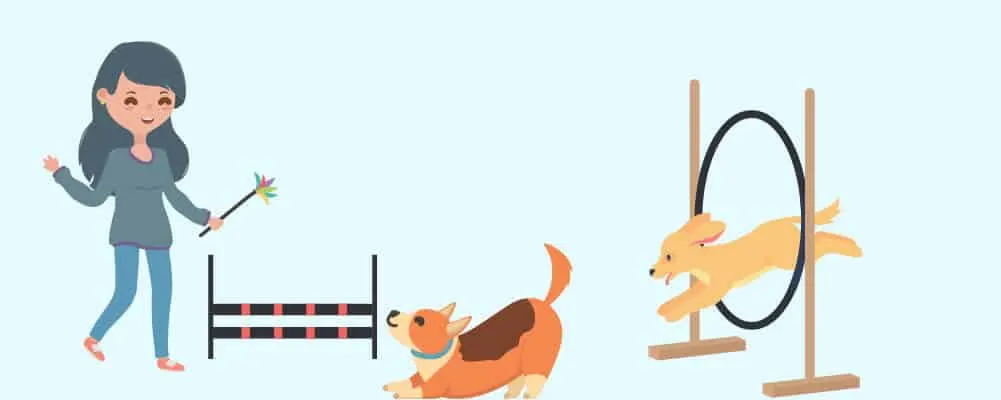
Now that we’ve covered our ten top training tips that make dog training much easier for everybody, let’s go through some great game ideas.
It’s important to have fun during training, as we said, and you can do that by playing games with your dog.
Along with keeping your dog fit and healthy, some of them also make use of certain commands or movements that are used in training.
A Flirt Pole
Flirt poles are great devices for exercising the physical and mental health of your dog. This is especially the case with high-energy dogs who need to be tired out so that they can relax.
Playing with a flirt pole is a great high-energy exercise that can help with that.
For those who don’t know what a flirt pole is, it’s a stick with a rope attached. It’s used to lure your dog into a chase, activating their prey drive in a way that doesn’t result in a mess.
You can also use them to teach dogs to let go on command. Remember to let them catch the lure sometimes so that they don’t lose interest.
This type of play can be tough on dogs with mobility issues or arthritic joints. In those cases, avoid flirt poles and go for exercises that aren’t as punishing on the joints instead.
Play Tug Of War With Your Dog
Nearly every dog owner has played this with their dog before, even if they didn’t want to!
It’s a natural play instinct for dogs to guard a toy or some other item that they’ve seized in their mouth, creating a short competition where they get to test their strength against yours.
It’s good exercise and a great way to bond with your dog. You can play this game with your dog without making them aggressive but you should stop the game if the dog’s teeth get close to your skin.
Puppies and younger dogs often take tug of war a little too far, trying to nip at your hand, so simply stop the game.
The dog will learn that this isn’t acceptable behavior and will stop, so they can keep playing and having fun.
Play Frisbee With Your Dog
If fetch isn’t fun enough for you or your dog, frisbee is a great step up that hones your dog’s chasing instincts and requires more skill on your part, making it fun for all.
Dogs aren’t born with the knowledge of how to catch a frisbee, however, so you may want to start with a soft disc to avoid any mishaps.
Frisbees can be tough and it only takes one failed catch to hurt your dog and make them scared to play again.
Practice with the soft disc and graduate to a proper frisbee when possible. Encourage them when they follow and catch the frisbee, so they understand how to play the game and have fun doing it.
Start with short distances and make them longer as the dog becomes more accustomed to the game.
Play Some Water Games With Your Dog
Depending on their temperament, some dogs like playing in the water. Others might get antsy when it rains, so you must know if your dog enjoys water games before playing them.
If they do, you can take them to the local beach and slap a dog life jacket on them, to keep them safe.
Bring toys that can float and throw them in the water, so your dog can fetch them while getting some swimming exercise. Naturally, your dog needs to be able to swim to enjoy water games.
If they can’t get a small pool for your backyard and teach them in an environment that’s easily controlled.
Hide Treats And Let Your Dog Find Them
Hide and seek may be fun but it’s even better when there’s a treat to be found! Grab some of your dog’s favorite treats and smuggle them around your home.
Dogs are naturally inquisitive and enjoy searching for things, so they’ll have a blast even if you hide the treats in the same place every time.
Dogs do a lot of thinking with their nose, so nose work games that require a lot of sniffer navigation are great for their brain.
Place treats on the ground while your dog is in a stay position and then release them, so they can go and find the treats.
If you’ve hidden treats in more advanced locations, point them in the right direction if the dog needs some help. Praise them whenever they find one, too.
Use A Box For The Dog To Dig
Like the prey, chasing, and sniffing instincts, dogs also have a natural inclination towards digging things up.
While that’s bad behavior to be trained out of them in certain contexts, it can also be used for a fun game too. Get them a digging box, so you don’t have them tearing up your backyard.
You can even make your own if you can do some woodworking. If there are cats nearby, you may want to get a top to stop them from dirtying it.
Once your dog understands that they can dig in that box, they’ll happily dig there whenever the feeling takes them.
You can encourage them by burying toys in there and praising the dog whenever they dig them out.
Play Hide And Seek
If playing hide and seek is good enough for human children, it’s good enough for your dog too. You can factor this into stay training with your dog.
Tell them to stay and, when they’re obedient enough to stay put over further distances, you should hide somewhere on your home premises.
Call your dog so that they want to come to you again. While they’ll get a hint from hearing your voice, their nose will do most of the work.
Since their sense of smell is so great, they’ll probably always find you. When they do, praise them and give them a treat.
DIY Dog Jump
If your dog is an agile type who is bustling with energy, you can create a DIY dog jump course to keep them entertained.
You can do this with some woodworking skills or by fixing PVC tubing together, taking some measurements at your dog’s shoulders to start.
If they do well, you can gradually raise the bar so that they get better and better. Remember that it’s all for fun, so don’t take it too seriously and don’t make the apparatus too high.
With smaller dog breeds, you won’t be able to make the apparatus too high, obviously.
Summary
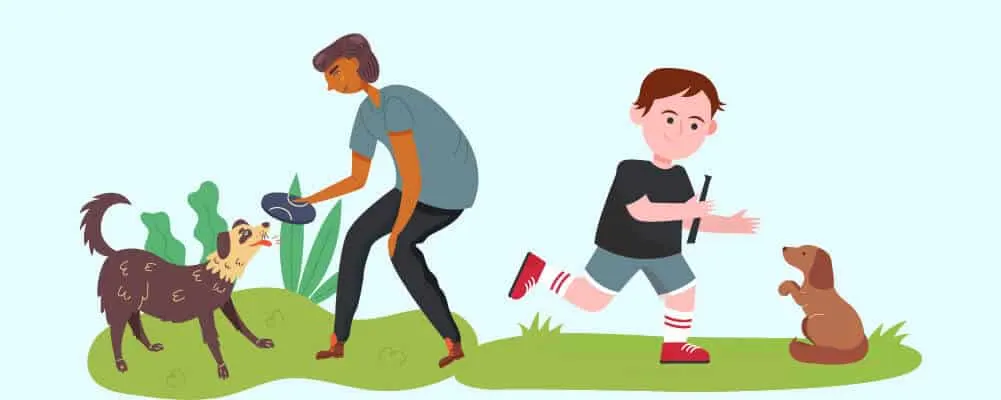
With that, we come to the end of our guide on dog training tips and some of the games that you should play with them.
After reading this guide in its entirety, you should be equipped with everything a dog owner needs to know when raising their pet.
You now know why training is important, as it doesn’t just teach your dog valuable skills but also enables them to live happy, stress-free lives in the civilized world.
By practicing the ten tips we’ve gathered above, even the most distracted dog will have an easier time learning how to behave around you, your friends, and other animals.
























